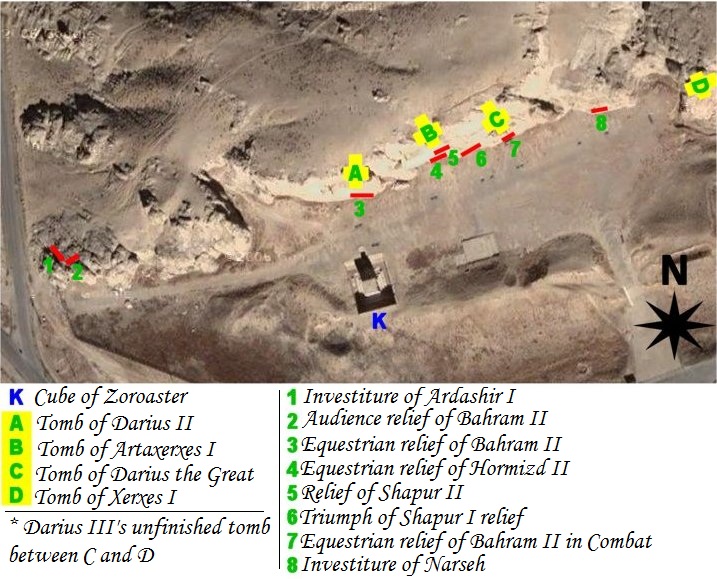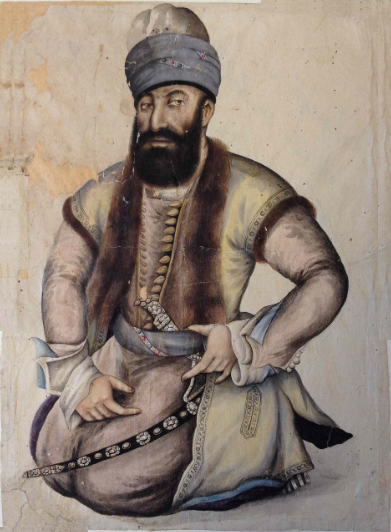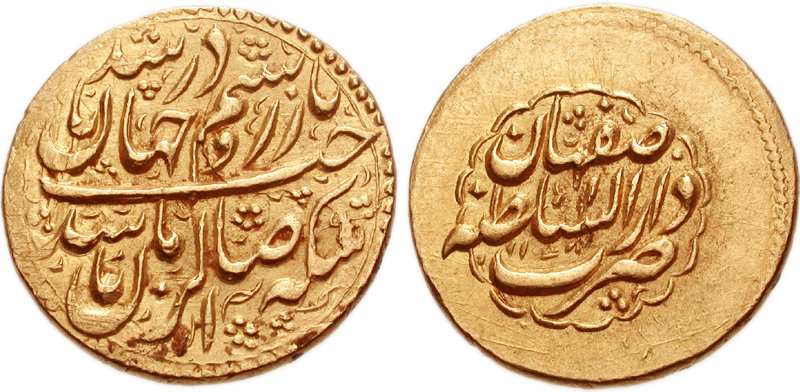|
Basseri
The Basseri ( fa, باسری or باصری) are a Persian nomadic and pastoral tribe of the Fars Province in Iran. Their migratory area is around Shiraz. They are one of the five tribes of the larger Khamseh confederation. The "tent" is the basic unit of social organization among the Basseri. All tents have a recognized head that deals with the formal officers of the tribe, villagers, and other strangers. The Basseri economy stems mainly from sheep and goats. Origin Basseries are mostly Persians. Their origin is the "Pasargadean" tribe. The Pasargadean tribe was the biggest tribe of Persia and the tribe who helped Cyrus The Great constitute the Achaemenid Empire. They were named "Karian" tribe in Sasanian Empire period. They were the rulers of some parts of south Persia and the Karyan city of Persia because they helped Ardashir I constitute the Sasanian empire. After the Muslim conquest of Persia they were under rule of Arabic Tribes of South Persia, who migrated to Pe ... [...More Info...] [...Related Items...] OR: [Wikipedia] [Google] [Baidu] |
Basseri Map In Iran
The Basseri ( fa, باسری or باصری) are a Persian nomadic and pastoral tribe of the Fars Province in Iran. Their migratory area is around Shiraz. They are one of the five tribes of the larger Khamseh confederation. The "tent" is the basic unit of social organization among the Basseri. All tents have a recognized head that deals with the formal officers of the tribe, villagers, and other strangers. The Basseri economy stems mainly from sheep and goats. Origin Basseries are mostly Persians. Their origin is the "Pasargadean" tribe. The Pasargadean tribe was the biggest tribe of Persia and the tribe who helped Cyrus The Great constitute the Achaemenid Empire. They were named "Karian" tribe in Sasanian Empire period. They were the rulers of some parts of south Persia and the Karyan city of Persia because they helped Ardashir I constitute the Sasanian empire. After the Muslim conquest of Persia they were under rule of Arabic Tribes of South Persia, who migrated to Pe ... [...More Info...] [...Related Items...] OR: [Wikipedia] [Google] [Baidu] |
Basseri Dialect
Basseri dialect (Persian: گویش باصری) is a Persian dialect spoken in Fars province by the Basseri people. It is part of the Southwestern Iranian branch of the Indo-Iranian group of Indo-European languages. Basseri dialect consists of many exclusive Persian words with Old and Middle Persian roots and less Arabic Loanwords, which is a consequence of living in the mountains, nomadism and less connection with urban Persians. Phonology Vowels Basseri dialect has 6 vowels including /æ/ , /ɒ/ , /o/ , /e/ , /i/ , and /u:/; and also 4 diphthongs including /æi/ , /ey/ ,/ow/ , and /oy/. Consonants Basseri Persian has 21 consonants, in contrast with Iranian Persian with 23 consonants. In this dialect, is merged into and is merged into . Distribution Basseri dialect is spoken among the Basseries in central Fars Province. Counties like Abadeh, Eqlid, Pasargad, Jahrom, Marvdasht, Shiraz, Khorrambid, Larestan, and Sarvestan Sarvestan ( fa, سروستان ''Sar ... [...More Info...] [...Related Items...] OR: [Wikipedia] [Google] [Baidu] |
Khamseh
The Khamseh ( fa, ایلات خمسه) is a tribal confederation in the province of Fars in southwestern Iran. It consists of five tribes, hence its name ''Khamseh'', "''the five''". The tribes are partly nomadic, Some are Persian speaking Basseri, some are Arabic speaking Arabs, and some are Qashqai Language speaking (Inalu, Baharlu and Nafar). They are sheep breeders, which they herd mounted on camels. The history of the Khamseh confederation of tribes starts in 1861–1862 when Naser al-Din Shah Qajar created the Khamseh Tribal Confederation. He combined five existing nomadic tribes, the Arab, Nafar, Baharlu, Inalu, and the Basseri and placed them under the control of the Qavam ol-Molk family. The pattern of forcibly uniting tribes was not a new idea, as the Safavid Shahs previously created homogenous Qizilbash confederations to temper the increasing strength of the Qashqai, who were gaining so much power. The Khamseh tribes were a mixture of Persians, Turks, and Arabs. Tribe ... [...More Info...] [...Related Items...] OR: [Wikipedia] [Google] [Baidu] |
Persian Language
Persian (), also known by its endonym Farsi (, ', ), is a Western Iranian language belonging to the Iranian branch of the Indo-Iranian subdivision of the Indo-European languages. Persian is a pluricentric language predominantly spoken and used officially within Iran, Afghanistan, and Tajikistan in three mutually intelligible standard varieties, namely Iranian Persian (officially known as ''Persian''), Dari Persian (officially known as ''Dari'' since 1964) and Tajiki Persian (officially known as ''Tajik'' since 1999).Siddikzoda, S. "Tajik Language: Farsi or not Farsi?" in ''Media Insight Central Asia #27'', August 2002. It is also spoken natively in the Tajik variety by a significant population within Uzbekistan, as well as within other regions with a Persianate history in the cultural sphere of Greater Iran. It is written officially within Iran and Afghanistan in the Persian alphabet, a derivation of the Arabic script, and within Tajikistan in the Tajik alphabet, a der ... [...More Info...] [...Related Items...] OR: [Wikipedia] [Google] [Baidu] |
Modern Persian
New Persian ( fa, فارسی نو), also known as Modern Persian () and Dari (), is the current stage of the Persian language spoken since the 8th to 9th centuries until now in Greater Iran and surroundings. It is conventionally divided into three stages: Early New Persian (8th/9th centuries), Classical Persian (10th–18th centuries), and Contemporary Persian (19th century to present). Dari is a name given to the New Persian language since the 10th century, widely used in Arabic (compare Al-Estakhri, Al-Muqaddasi and Ibn Hawqal) and Persian texts. Since 1964, it has been the official name in Afghanistan for the Persian spoken there. Classification New Persian is a member of the Western Iranian group of the Iranian languages, which make up a branch of the Indo-European languages in their Indo-Iranian subdivision. The Western Iranian languages themselves are divided into two subgroups: Southwestern Iranian languages, of which Persian is the most widely spoken, and Northwester ... [...More Info...] [...Related Items...] OR: [Wikipedia] [Google] [Baidu] |
Nomad
A nomad is a member of a community without fixed habitation who regularly moves to and from the same areas. Such groups include hunter-gatherers, pastoral nomads (owning livestock), tinkers and trader nomads. In the twentieth century, the population of nomadic pastoral tribes slowly decreased, reaching an estimated 30–40 million nomads in the world . Nomadic hunting and gathering—following seasonally available wild plants and game—is by far the oldest human subsistence method. Pastoralists raise herds of domesticated livestock, driving or accompanying them in patterns that normally avoid depleting pastures beyond their ability to recover. Nomadism is also a lifestyle adapted to infertile regions such as steppe, tundra, or desert, ice and sand, where mobility is the most efficient strategy for exploiting scarce resources. For example, many groups living in the tundra are reindeer herders and are semi-nomadic, following forage for their animals. Sometimes also described as ... [...More Info...] [...Related Items...] OR: [Wikipedia] [Google] [Baidu] |
Naqsh-e Rostam
Naqsh-e Rostam ( lit. mural of Rostam, fa, نقش رستم ) is an ancient archeological site and necropolis located about 12 km northwest of Persepolis, in Fars Province, Iran. A collection of ancient Iranian rock reliefs are cut into the face of the mountain and the mountain contains the final resting place of four Achaemenid kings, notably king Darius the Great and his son, Xerxes. This site is of great significance to the history of Iran and to Iranians, as it contains various archeological sites carved into the rock wall through time for more than a millennium from the Elamites and Achaemenids to Sassanians. It lies a few hundred meters from Naqsh-e Rajab, with a further four Sassanid rock reliefs, three celebrating kings and one a high priest. Naqsh-e Rostam is the necropolis of the Achaemenid dynasty ( 550–330 BC), with four large tombs cut high into the cliff face. These have mainly architectural decoration, but the facades include large panels over the doorway ... [...More Info...] [...Related Items...] OR: [Wikipedia] [Google] [Baidu] |
Zand Dynasty
The Zand dynasty ( fa, سلسله زندیه, ') was an Iranian dynasty, founded by Karim Khan Zand (1751–1779) that initially ruled southern and central Iran in the 18th century. It later quickly came to expand to include much of the rest of contemporary Iran (except for the provinces of Balochistan and Khorasan) as well as parts of Iraq. The lands of present-day Armenia, Azerbaijan, and Georgia were controlled by khanates which were de jure part of the Zand realm, but the region was de facto autonomous. The island of Bahrain was also held for the Zands by the autonomous Al-Mazkur sheikhdom of Bushire. The reign of its most important ruler, Karim Khan, was marked by prosperity and peace. With its capital at Shiraz, arts and architecture flourished under Karim Khan's reign, with some themes in architecture being revived from the nearby sites of the Achaemenid (550–330 BC) and Sasanian (224–651 AD) era's of pre-Islamic Iran. The tombs of the medieval Persian poets Hafez a ... [...More Info...] [...Related Items...] OR: [Wikipedia] [Google] [Baidu] |
Karim Khan
Mohammad Karim Khan Zand ( fa, محمدکریم خان زند, Mohammad Karīm Khân-e Zand; ) was the founder of the Zand Dynasty, ruling from 1751 to 1779. He ruled all of Iran (Name of Iran, Persia) except for Khorasan Province, Khorasan. He also ruled over some of the Caucasus, Caucasian lands and occupied Basra for some years. While Karim was ruler, Iran recovered from the devastation of 40 years of war, providing the war-ravaged country with a renewed sense of tranquillity, security, peace, and prosperity. The years from 1765 to Karim Khan's death in 1779, marked the zenith of Zand rule. During his reign, relations with United Kingdom, Britain were restored, and he allowed the East India Company to have a trading post in southern Iran. He made Shiraz, Iran, Shiraz his capital and ordered the construction of several architectural projects there. As noted by ''The Oxford Dictionary of Islam'', "Karim Khan Zand holds an enduring reputation as the most humane Iranian ruler of ... [...More Info...] [...Related Items...] OR: [Wikipedia] [Google] [Baidu] |
Pahlavi Dynasty
The Pahlavi dynasty ( fa, دودمان پهلوی) was the last Iranian royal dynasty, ruling for almost 54 years between 1925 and 1979. The dynasty was founded by Reza Shah Pahlavi, a non-aristocratic Mazanderani soldier in modern times, who took on the name of the Pahlavi language spoken in the pre-Islamic Sasanian Empire in order to strengthen his nationalist credentials. The dynasty replaced the Qajar dynasty in 1925 after the 1921 coup d'état, beginning on 14 January 1921 when 42-year-old soldier Reza Khan was promoted by British General Edmund Ironside to lead the British-run Persian Cossack Brigade. About a month later, under British direction, Reza Khan's 3,000-4,000 strong detachment of the Cossack Brigade reached Tehran in what became known as the 1921 Persian coup d'état. The rest of the country was taken by 1923, and by October 1925 the Majlis agreed to depose and formally exile Ahmad Shah Qajar. The Majlis declared Reza Pahlavi as the new Shah of Iran on 12 D ... [...More Info...] [...Related Items...] OR: [Wikipedia] [Google] [Baidu] |
Islamic Revolution Of Iran
The Iranian Revolution ( fa, انقلاب ایران, Enqelâb-e Irân, ), also known as the Islamic Revolution ( fa, انقلاب اسلامی, Enqelâb-e Eslâmī), was a series of events that culminated in the overthrow of the Pahlavi dynasty under Shah Mohammad Reza Pahlavi, and the replacement of his government with an Islamic republic under the rule of Ayatollah Ruhollah Khomeini, a leader of one of the factions in the revolt. The revolution was supported by various leftist and Islamist organizations. After the 1953 Iranian coup d'état, Pahlavi had aligned with the United States and the Western Bloc to rule more firmly as an authoritarian monarch. He relied heavily on support from the United States to hold on to power which he held for a further 26 years. This led to the 1963 White Revolution and the arrest and exile of Ayatollah Khomeini in 1964. Amidst massive tensions between Khomeini and the Shah, demonstrations began in October 1977, developing into a campaign of c ... [...More Info...] [...Related Items...] OR: [Wikipedia] [Google] [Baidu] |
Shia Islam
Shīʿa Islam or Shīʿīsm is the second-largest branch of Islam. It holds that the Islamic prophet Muhammad designated ʿAlī ibn Abī Ṭālib as his successor (''khalīfa'') and the Imam (spiritual and political leader) after him, most notably at the event of Ghadir Khumm, but was prevented from succeeding Muhammad as the leader of the Muslims as a result of the choice made by some of Muhammad's other companions (''ṣaḥāba'') at Saqifah. This view primarily contrasts with that of Sunnī Islam, whose adherents believe that Muhammad did not appoint a successor before his death and consider Abū Bakr, who was appointed caliph by a group of senior Muslims at Saqifah, to be the first rightful (''rāshidūn'') caliph after Muhammad. Adherents of Shīʿa Islam are called Shīʿa Muslims, Shīʿītes, or simply Shīʿa or Shia. Shīʿa Islam is based on a ''ḥadīth'' report concerning Muhammad's pronouncement at Ghadir Khumm.Esposito, John. "What Everyone Nee ... [...More Info...] [...Related Items...] OR: [Wikipedia] [Google] [Baidu] |











